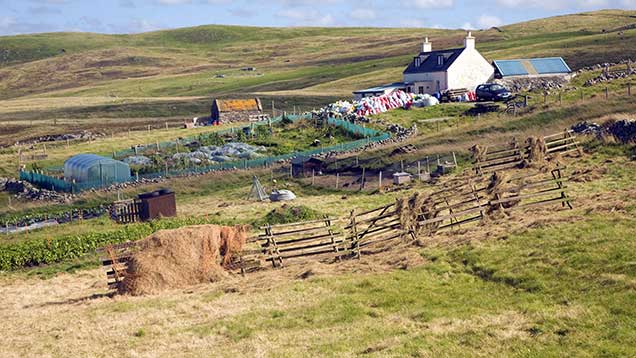CAP budget cuts hit Scottish farm payments
 © Rex
© Rex Scottish farmers will receive €70m less in direct support than they did in 2013 when payments begin next month, the Scottish government has announced.
The cut is a direct result of the budget deal hammered out in 2013 by Heads of State, the European Parliament and the European Commission. And, according to NFU Scotland (NFUS), many farmers will not have anticipated the lower payments.
Many farmers will not have anticipated the lower payments, according to NFU Scotland (NFUS).
Union chief executive Scott Walker said: “It could not have come at a worse time, given that farmgate prices have been down this year across all sectors.”
See also: CAP at a glance for UK regions
Confirming the 12% cut, Scotland’s rural affairs secretary Richard Lochhead said the reduction would have been halved if Scotland had received the controversial €223m convergence uplift, which he argued rightly belonged to Scottish farmers and crofters.
Mr Lochhead also revealed more detail on how the new CAP will be implemented in Scotland from January 2015. He said measures had been designed to target genuine farming activity and provide a fair deal for those disadvantaged under the current historic based system. These included flexibility on implementing the National Reserve and action to end so-called “slipper farming”.
“We have already won flexibilities in Europe for a National Reserve that goes beyond the mandatory categories of Young Farmers and New Entrants. Thanks to our success in the negotiations last year, past new entrants all the way back to the reference period for the SFP will receive basic payments at the regional average from day one of the new system,” he said.
“This approach will immediately address the unfair treatment faced by hundreds of farmers over the past few years, while respecting the strict conditions contained in the EU regulations.
“We are also providing best possible support for Young Farmers, who will be able to claim top-ups to their basic payment on the maximum number of hectares allowed. We will also pay out on the best land first.”
However the minister’s deal didn’t received the full backing of the NFUS.
Mr Walker said: “What has been announced today doesn’t address all the issues we have taken to the Scottish government.
“However, there has been movement by government in the past few weeks and what has been announced today is better than what was originally proposed.”
He added that the union welcomed the fact that government had listened to the concerns expressed by us and other stakeholders and made moves to broaden the national reserve to include some of the businesses who were still developing when historic entitlements were first allocated.
“It is important now that the government sits down with the union, the New Entrants Panel, and other stakeholders so we can all get a full analysis and understanding of what this will mean, particularly the move to include previous National Reserve developing businesses.”
The Scottish government is also introducing minimum activity rules which require active management on all rough grazing land if it is to qualify for CAP payments. This is the type of land used in the past for slipper farming. In the case of active management by grazing, there will be a choice of meeting a minimum stocking density or undertaking other annual activities.
Mr Lochhead said the proposed rates for Scottish Rural Development Programme (SRDP) funding would be published shortly. And he sought to reassure farmers that despite an “extremely complex” CAP, the Scottish government would ensure next year’s funds were paid as early as possible in the payment window set by Europe.
The payment window for direct farm funding goes from 1 December to 30 June the following year.
